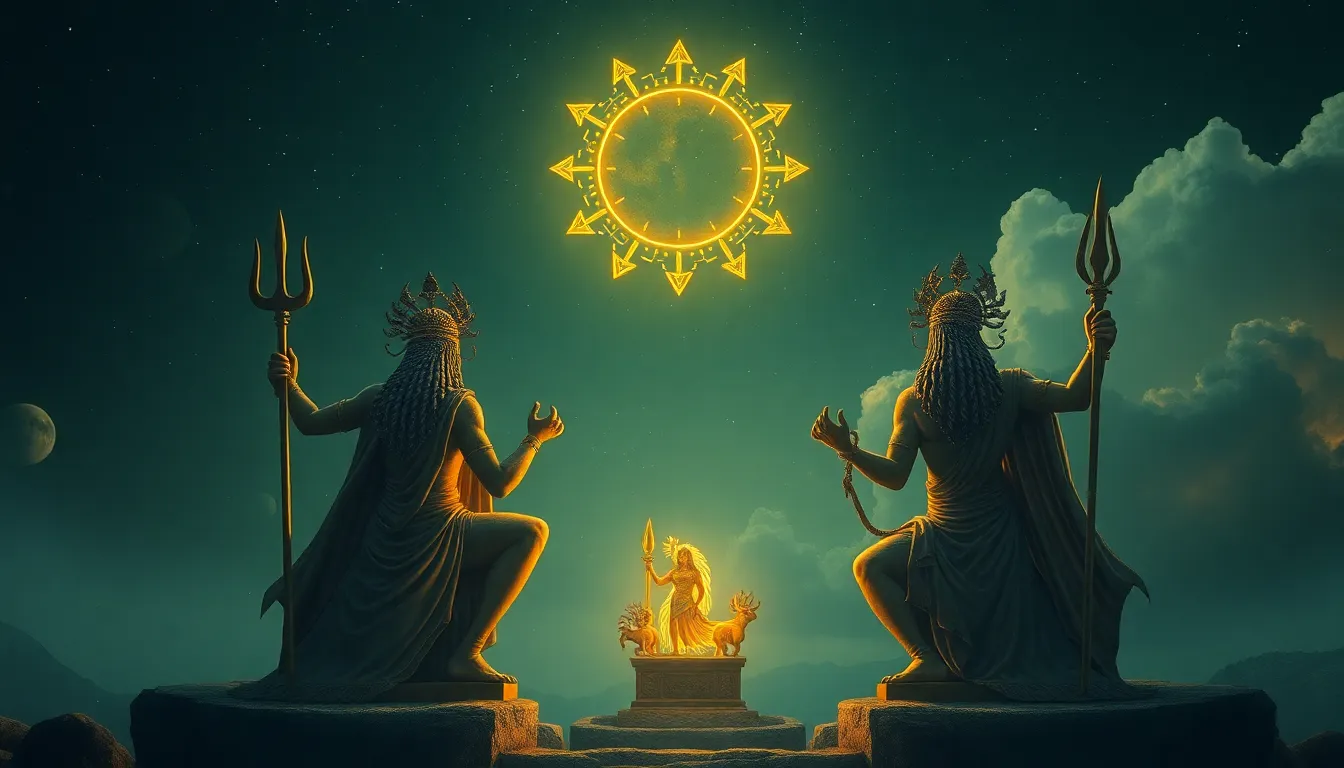The Most Influential Ancient Deities You Should Know About
Throughout human history, ancient deities have played a pivotal role in shaping various cultures, beliefs, and practices. These divine figures were not merely figments of imagination; they represented the values, fears, and hopes of the societies that worshipped them. From the majestic pantheon of Greek gods to the revered figures in Hinduism, these deities influenced art, literature, and societal norms, leaving a lasting legacy that continues to resonate today.
1. Zeus: The King of the Greek Gods
Zeus, the supreme deity in Greek mythology, is often depicted as a robust figure wielding a thunderbolt. He is associated with numerous symbols, including the eagle, oak tree, and the aegis—a protective cloak often adorned with the head of a Gorgon.
As the ruler of Mount Olympus and the god of the sky, Zeus played a crucial role in various myths that explain natural phenomena and human behavior. He was known for his numerous romantic escapades, resulting in a vast lineage of heroes and demigods, such as Hercules and Perseus.
In modern times, Zeus’s influence can be seen in various forms of media, including films, books, and video games. His character often embodies the themes of power, justice, and the complexity of human emotions, showcasing the timeless relevance of his mythos.
2. Ra: The Sun God of Ancient Egypt
Ra, the sun god, held a paramount position in ancient Egyptian cosmology. He was believed to travel across the sky in a solar boat, illuminating the world and providing life-giving energy. Each evening, Ra would journey through the underworld, battling the serpent Apophis to ensure the sun’s return the following day.
Ra’s influence extended beyond mythology; he was central to the daily lives of Egyptians, symbolizing creation and renewal. Temples dedicated to Ra, such as the Temple of Karnak, showcase the elaborate art and architecture that celebrated his divinity.
The impact of Ra can still be felt today, as his stories continue to inspire artistic interpretations and cultural references in various forms of literature and media.
3. Vishnu: The Preserver in Hinduism
In Hinduism, Vishnu is revered as the preserver of the universe, embodying the principles of dharma (cosmic order). He is commonly depicted with blue skin, holding a conch shell, discus, and mace, representing his divine powers.
Vishnu is known for his ten avatars, or incarnations, which include well-known figures such as Rama and Krishna. Each avatar descends to Earth during times of crisis to restore balance and righteousness.
Today, Vishnu’s teachings and stories remain integral to Hindu practice, influencing rituals, festivals, and cultural expressions across the globe. Temples dedicated to Vishnu, such as the iconic Tirupati, attract millions of devotees every year.
4. Odin: The Allfather of Norse Mythology
Odin, the chief god in Norse mythology, is often associated with wisdom, war, and poetry. He is depicted as a one-eyed figure, having sacrificed his eye for knowledge. Odin’s attributes include the raven (symbolizing knowledge and prophecy) and the spear Gungnir, which never misses its target.
Valhalla, Odin’s hall, serves as a place for fallen warriors, reflecting the cultural importance of valor and honor in Norse society. Those who die bravely in battle are welcomed into Valhalla, where they feast and prepare for Ragnarok, the end of the world.
Odin’s legacy continues to thrive in modern literature and popular culture, inspiring countless adaptations in novels, movies, and television series, often highlighting themes of sacrifice and the quest for knowledge.
5. Quetzalcoatl: The Feathered Serpent of Mesoamerica
Quetzalcoatl, the feathered serpent deity, was a significant figure in both Aztec and Toltec cultures. He represented the duality of nature, embodying the earth (serpent) and the sky (feathers). Quetzalcoatl was associated with wind, air, and learning, often depicted as a god of creation.
Myths surrounding Quetzalcoatl include his journey to the underworld and his return to the heavens, symbolizing the cyclical nature of life. His teachings emphasized the importance of knowledge, art, and culture, making him a central figure in Mesoamerican civilization.
The legacy of Quetzalcoatl endures in modern interpretations, where he is often celebrated as a symbol of peace and creativity, influencing contemporary art and literature.
6. Anubis: The Guardian of the Underworld
Anubis, the jackal-headed god, is primarily associated with funerary practices and the afterlife in ancient Egypt. He was believed to oversee the mummification process and guide souls through the underworld, ensuring their safe passage into the afterlife.
The symbolism of the jackal, an animal often associated with death and burial, highlights Anubis’s role in protecting the dead. His presence in tombs and funerary texts illustrates the significance of death and the afterlife in Egyptian culture.
Anubis continues to be a popular figure in modern media, appearing in films, literature, and video games, often embodying themes of mystery and the supernatural.
7. Athena: The Goddess of Wisdom and Warfare
Athena, the Greek goddess of wisdom, warfare, and crafts, is depicted as a strong, intelligent figure often accompanied by an owl, symbolizing wisdom. She played a crucial role in Athenian society, where she was revered as the patroness of the city of Athens, which was named in her honor.
The Parthenon, a magnificent temple dedicated to Athena, stands as a testament to her significance in ancient Greece. In addition to her martial prowess, Athena is celebrated for her strategic thinking and guidance in various myths.
In contemporary culture, Athena’s representation can be seen in literature, art, and film, often highlighting themes of empowerment and intellect.
8. Amaterasu: The Sun Goddess of Shinto
Amaterasu is a central figure in Japanese mythology and Shinto practices, revered as the sun goddess and the embodiment of light. According to legend, she emerged from a cave, bringing light back to the world after a period of darkness. This act symbolizes renewal and the triumph of good over evil.
The importance of Amaterasu in Japanese culture is profound, influencing various rituals, festivals, and artistic expressions. She is often depicted as a radiant figure, representing purity and life.
Today, Amaterasu continues to play a vital role in Shinto beliefs, with numerous shrines dedicated to her, attracting worshippers who seek her blessings and guidance.



